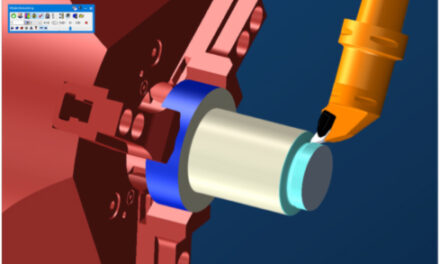
Siemens’ Simcenter Testlab drives innovation and productivity in test-based engineering
- Introduces Simcenter Testlab Neo, the next-generation platform for multidisciplinary test-based performance engineering
- Introduces end-to-end durability testing, uniquely combining data collection and analytics to accelerate the delivery of critical durability insights
- Introduces intuitive sound quality engineering solution
- Introduces model-based system testing embedding virtual simulation within physical testing for system validation at any development stage
Siemens announced today the latest release of Simcenter Testlab software, its suite of data collection, analytics, and modeling software for test-based performance engineering in the core fields of noise and vibration, acoustics and durability. Formerly LMS Test.Lab software, Simcenter Testlab is designed specifically to offer test teams a complete set of capabilities to help innovate smart products under tight schedules.
Simcenter Testlab Neo is the next-generation platform for test-based engineering. It extends its test-based engineering capabilities with end-to-end durability testing, uniquely combining data collection and data analytics, and introduces a new intuitive sound quality engineering solution. It also strengthens integration throughout the Simcenter portfolio by introducing model-based system testing embedding virtual simulation within physical testing for system validation at any development stage. Overall, the latest release includes features that lend to greater productivity, more insights, increased confidence, and easier team collaboration.
- Simcenter Testlab offers an integrated end-to-end solution for load data acquisition and processing, said Guillermo Gonzalez, function and durability manager at Nissan Technical Center Europe, Spain.
- The solution accelerates the delivery of critical durability insights when preparing for test rig campaigns or reliable simulations. It is faster, easier to use and robust.
Developed to answer challenges in test-based engineering, such as shorter testing cycles, conflicting performance requirements, growing product complexity and overall cost reduction, the latest release offers a new user interface with Simcenter Testlab Neo. This next-generation platform sets higher standards in critical focus areas including greater productivity, increased confidence, more insight, and easier collaboration.
The portfolio has also been extended to include full end-to-end durability testing, uniquely combining data collection and analytics into one single environment. It covers every step of a typical test campaign, from channel setup and measurements, to validation, consolidation, analysis, and reporting. The new Simcenter Testlab load and fatigue analysis solution speeds up time-consuming tasks such as load data consolidation, accurate rainflow counting, and experimental fatigue analysis. It integrates instant visualization tools with interactive or automated analysis, performant processing, and active reporting to accelerate the delivery of critical durability insights.
 For interactive troubleshooting of noise issues and faster benchmarking of design variants, the new Simcenter Testlab sound quality solution includes a calibrated audio replay with interactive filtering, built-in guidance for occasional users, standard off-the-shelf procedures, and flexible combination of noise, vibration and harshness (NVH) and sound quality metrics.
For interactive troubleshooting of noise issues and faster benchmarking of design variants, the new Simcenter Testlab sound quality solution includes a calibrated audio replay with interactive filtering, built-in guidance for occasional users, standard off-the-shelf procedures, and flexible combination of noise, vibration and harshness (NVH) and sound quality metrics.
Model-based system testing enables attribute-specific evaluation throughout the development cycle, using virtual models, combined virtual-physical models and physical prototypes. Simcenter Testlab closes the loop with simulation by enabling integration of a wide variety of models from Simcenter Amesim software for co-simulation, on-the-fly creation of model-based virtual channels using measured inputs, thus providing deep physical insights into the device.
With enhanced capabilities for NVH and acoustic design of electric vehicles, this latest release also specifically address the current challenges of digitalization and electrification. In EVs, as the noise of an ICE is lower (or absent), secondary sources such as the wind, the road, or electric motors in components, are no longer masked and become more apparent. This requires additional engineering effort and testing using techniques such as aeroacoustic testing, road noise transfer path analysis (TPA), and vehicle interior acoustics analysis, now available within Simcenter Testlab.
- The latest release of Simcenter Testlab, and the inclusion of this technology in the Simcenter portfolio, is a testament to the importance of testing solutions as a part of our end-to-end solution, said Dr. Jan Leuridan, senior vice president of Simulation and Test Solutions, Siemens PLM Software.
- These Simcenter testing solutions support innovative product development by helping manufacturers realize innovation by validating prototypes and their digital twins, and will integrate with the Simcenter portfolio seamlessly, while still retaining the strengths nested in their long-standing test capabilities.






